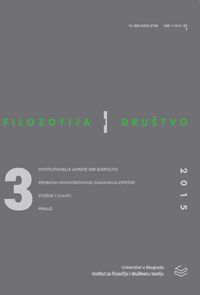Art: A Brief History of Absence
Art: A Brief History of Absence
Author(s): Davor DžaltoSubject(s): Philosophy
Published by: Institut za filozofiju i društvenu teoriju
Keywords: Aesthetics; aesthetics of absence; autonomy of art; beauty; modern art; vanishing acts; emptiness; end of art
Summary/Abstract: This essay focuses on the logic of the aesthetic argument used in the eighteenth century as a conceptual tool for formulating the modern concept of “(fine) art(s).” The essay also examines the main developments in the history of the art of modernity which were initiated from the way the “nature” of art was conceived in early modern aesthetics. The author claims that the formulation of the “aesthetic nature” of art led to the process of the gradual disappearance of all of the formal elements that had previously characterized the visual arts; the result was “emptiness” or “nothingness” as art. The author refers to this process in terms of “vanishing acts” that allow for the formulation of an aesthetics of absence in connection to twentieth-century art (complementing the Ästhetik der Absenz, formulated in German art theory). The author also briefly addresses the consequences that these processes have for the way contemporary art, and art world operate.
Journal: Filozofija i društvo
- Issue Year: 26/2015
- Issue No: 3
- Page Range: 652-676
- Page Count: 25

